Bromeliads
Comprising more than 3000 species, the Bromeliaceae family is diverse and eye-catching. Ranging from pineapples and air plants (Tillandsia or Spanish Moss) to lithophytes, they're a fascinating family to get to know and grow.
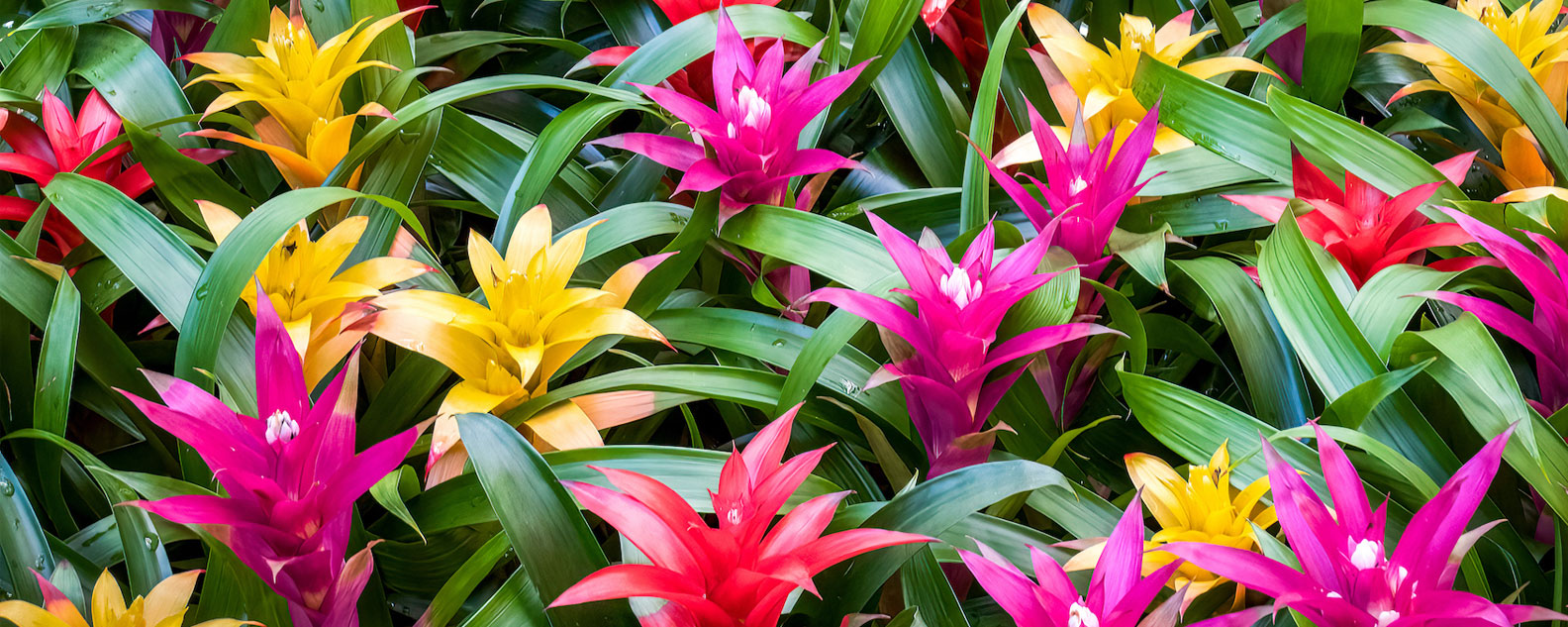
About the Bromeliaceae family
The Bromeliaceae family contains more than 3000 species in 56 genera. Bromeliads have adapted to survive in a diverse range of environments, growing terrestrially (in the ground), as lithophytes (on rocks) and epiphytes (on other plants).
Native to tropical North and South America, Bromeliad habitats range from deserts to rainforests, from sea level to altitudes of over 4,000 metres. Their leaves are often spiny, patterned and powdery in appearance and have tiny scales called trichomes that help them absorb water. There are 55 Bromeliads listed as critically endangered on the IUCN Red List.
How often do Bromeliads bloom?
Bromeliads are herbaceous evergreen perennials with their leaves arranged in spirals. Many Bromeliads are monocarpic which means that they flower just once before they die. However, all is not lost! Most Bromeliads produce ‘pups’ so that the plant’s survival is assured once each rosette of leaves dies.
Epiphytes – old-school tree-huggers
Many epiphytic Bromeliads have a ‘water tank’ created by tight rosette-forming leaves that help them survive during dry times. Differing from other plants that absorb nutrients and water via their roots, for many Bromeliads the primary function of the roots is to act as anchors allowing them to attach to their hosts.
Grow Bromeliads at home
There’s such a vast range of Bromeliad varieties that you’re sure to find one that’s right for you. They’re ideal for warm climate gardens and range from compact species to huge plants with vibrant foliage and spectacular flowers.
Garden sign story: Adapt and survive
There’s no challenge they can’t handle!
From the scorching desert to the dark damp rainforest, bromeliads have adapted to thrive. Over 3,500 species grow across the tropical and subtropical Americas and just one in west Africa. It’s easy to spot their wild origins. Look for clues in the circular rosette of leaves: Sunlovers have thick, leathery leaves and a silvery sheen. Rainforest residents are deep green tender-leaved tree-huggers. Desert dwellers are spiny and grey
Size limits
The world’s largest bromeliad, the Queen of the Andes (Puya raimondii), has a 15 metre high flower spike! At the other extreme is the tiniest bromeliad – the eight-centimetre Tillandsia ionantha.
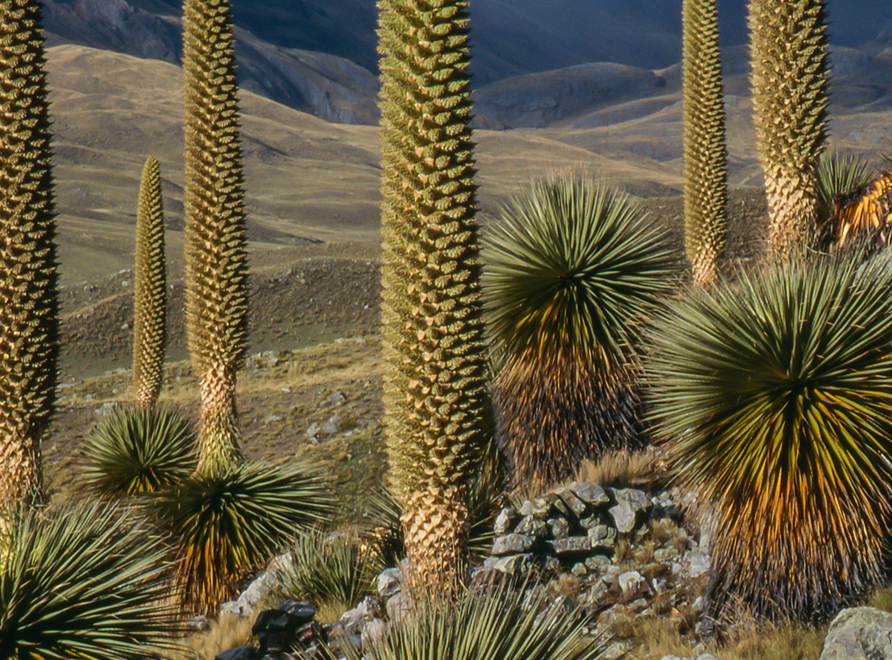
Queen of the Andes – Puya raimondii Syn. Pourretia gigantea
Queen of the Andes
Queen of the Andes – Puya raimondii Syn. Pourretia gigantea
Native to the high, dry Andes mountains, Puya raimondii is the largest known bromeliad species; it has a striking architectural form and grows up to 15 metres high including the flower spike.
The Queen of the Andes bloom is the largest among all plants based on the physical size of the compound flower spike of up to 20,000 florets. They have a life span of up to 100 years, then die after they have flowered.
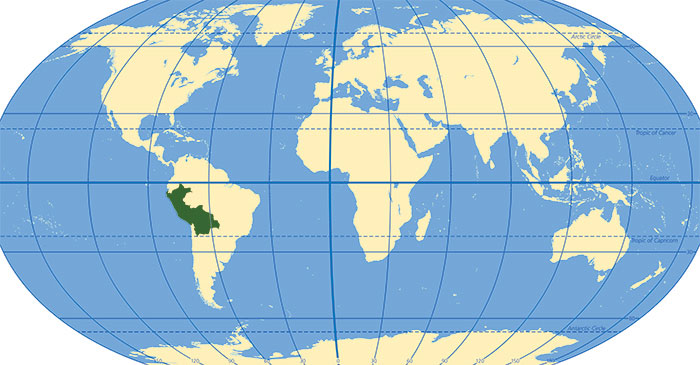
Queen of the Andes' habitat
Titanka
Kunku
Makirwa (Mapuche)
The genus name Puya is from the Chilean Mapuche language, meaning ‘point’. It is also known locally as ‘Titanka’, ‘Kunku’, and ‘Makirwa’ in different dialects of the Quechua language of the First Peoples of the Peruvian Andes.
The epithet raimondii was given to honour the 19th-century Italian geographer and naturalist Antonio Raimondi (1826-1890) who collected plants in Peru.
Puya raimondii grows in stands in the dry, cold, rocky slopes and sparse shrublands at 3000- 4,800 metres in the Andes of Bolivia and Peru.
Although the 6,000 hectare Titankayocc Forest Regional Conservation Area in Peru has more than 200,000 Queen of the Andes specimens, it is considered endangered due to its limited natural regeneration, land degradation, collection for fuel, and grazing.
Puya raimondii is a terrestrial bromeliad with a dense rosette of razor-sharp, grey-green, leathery leaves on a thick and woody stem up to 5 metres tall. The long, narrow leaves grow up to 1.25 metres and have barbed spines that sometimes trap birds and small animals.
When Puya raimondii is between 80 and 100 years old, a single vertical flower spike reaching up to 10 metres grows over a three-month period. The bloom has up to 20,000 individual 5cm flowers with three creamy-white petals and striking orange anthers, which twist up the stem in a spiral.
Hummingbirds and insects pollinate the Queen of the Andes’ bloom, and the plant does not produce pups (offset juveniles). It flowers only once in its life, between January and May, and then dies. Millions of seeds form in capsules along the flower stem, but rarely germinate, contributing to the plant’s endangered status.
Visit the Garden Explorer and type 'Puya raimondii' into the 'Common or Scientific Name' field, then click search to be shown where.
Visit the Garden Explorer and type Puya alpestris subsp. zoellneri, or Blue Puya into the 'Common or Scientific Name' field, then click search to be shown where.

Blushing Bromeliads – Neoregelia
Neoregelia
The blushing Bromeliads
Neoregelia are vibrantly-coloured bromeliads from tropical South America with many hybrids. The eye-catching cultivars are available in various patterns, and their colours become more intense when grown in higher light.
Neoregelia can be epiphytes, lithophytes, or terrestrial and have a symbiotic relationship with frogs and insect larvae which breed in the 'water tank' created by the plant's central rosette of leathery leaves.
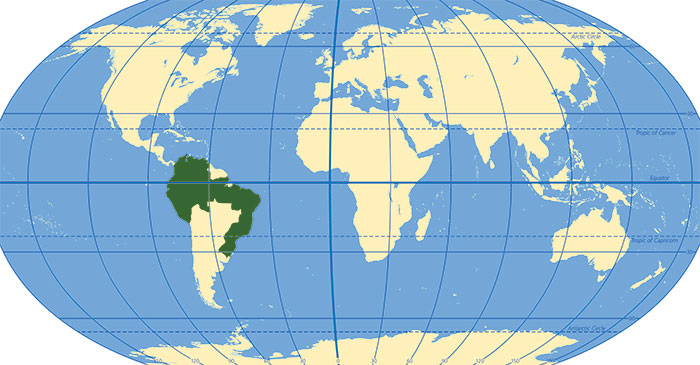
Neoregelia's habitat
Neoregelia are excellent potted plants and easy to grow in subtropical conditions with plenty of moisture and air circulation. They are grown for their brightly-coloured leaves, which return to green in low light, so it's essential to plant them in a brightly lit spot.
Their shallow, fibrous root system is not used to absorb nutrients; it functions as an anchor and will rot in soil, so the plant needs a soil-less potting mix. Neoregelia can be propagated by removing and replanting the 'pups' (offshoots) when two-thirds the size of the parent and by division of established clumps.
Support the Gardens' important work and visit your nearest Growing Friends Nursery to check out their current range of bromeliads.
'Regelia' was the name given to this Bromeliad to honour Edouard August von Regel (1815-1892), botanist and director of St. Petersburg Botanic Gardens in Russia. 'Neo' is from the Greek 'neos' which means new or fresh and was added to distinguish the plant from another Regelia genus in the Myrtaceae family, which was also named after von Regel.
The wild forms of Neoregelia are usually epiphytes. They are native to the moist tropical and subtropical rainforests and drier coastal open forests, shrublands and mangroves of Brazil, Colombia, Ecuador, Peru and Venezuela, most Neoregelias in cultivation are hybrids.
Neoregelias generally grow up to 40 cm tall and typically flower only once in their lifetime.
They have a rosette of spirally arranged, broad, colourful, patterned leaves with spiny margins and rounded tips with a sharp point. In addition to attracting pollinators, the varied pigmentation is thought to protect the foliage from sunburn. The colour variations have been exploited by breeders, leading to the more than 125 cultivars available today.
Nutrients are absorbed from the 'tank' formed by the centre of the rosette of leaves where rain, leaf litter and animal droppings accumulate, and the flowers grow.
The flowers are small with three petals, often a blue-purple colour with six stamens and appear on short, leafless flowering stems. Although they bloom only once, Neoregelias set seed and 'pups' (offshoots) in clumps before they die; the fruit are cylindrical berries containing many seeds surrounded by mucilage.
There are over 100 species of Neoregelia at the Royal Botanic Garden Sydney, including Neoregelia 'Hannibal Lecter' which can be found in Bed 18b.
To find other species in the Garden, visit the Garden Explorer and type 'Neoregelia' into the 'Common or Scientific Name' field, then click 'search' to be shown where they can be found in the Garden.
Garden sign story: Breeding beauty
It's not about the flowers!
Neoregelias say it all with their leathery leaves — brightly coloured, spotted and striped. The tiny flowers are almost hidden, deep in the water tank. Plant breeders use a toothpick to hand-pollinate the flowers, creating new hybrids: There are thousands of Neoregelia varieties in a rainbow of colours and patterns.
Image: Pollinating Neoregelia plants take a steady hand and a keen eye! ©J.Plaza Blushing Bromeliads Neoregelia species
Light-lovers
These showy plants respond to bright light by developing intense colours. But in a shady location, they may lose their vibrancy and could even revert to green!

Spanish Moss – Tillandsia usneoides
Spanish Moss
Tillandsia usneoides – the bearded Bromeliad
Tillandsia usneoides is known as ‘Itla-okla’, which translates as ‘tree hair’ in the Choctaw language of the Native American people from the southeastern woodlands of Alabama and Mississippi. It hails from the coastal regions of the south-eastern USA from Virginia to Texas and south to central Argentina and Chile.
Often referred to as an ‘Air Plant’ due to its epiphytic nature, Tillandsia usneoides is an attractive silvery cascade of slender stems. It loves humid conditions and is spread by birds and possums who make nests from the soft foliage. Although it’s not a parasite, the plant is covered with tiny scales which absorb water and nutrients leached from the vegetation of its host.
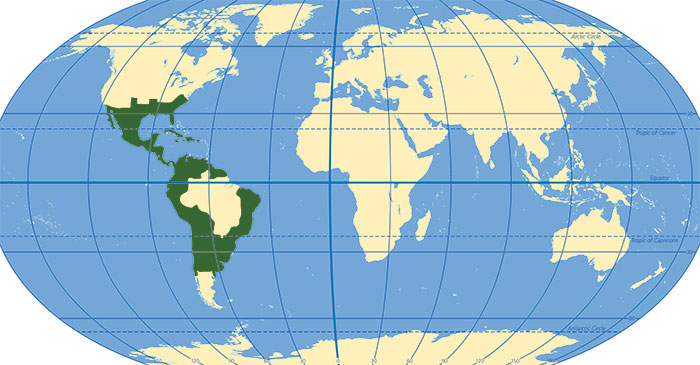
Spanish Moss' habitat
- Itla-okla (Choctaw)
Spanish Moss
Barba de Palo
Old Man’s Beard
Swedish Naturalist, Carl Linnaeus named the genus Tillandsia for his teacher Elias Erici Tillandz (1640-1693), Swedish botanist and professor of medicine. The species name ‘usneoides’ indicates this plant’s resemblance to the genus of lichens, Usnea.
Tillandsia usneoides is found on the coast of south-eastern USA from Virginia to Texas and south to central Argentina and Chile. Its native environment ranges from sea level to 3300 m altitude in lowlands, swamps, and marshes in subtropical and tropical habitats, including mangroves, scrub, rainforest, and montane cloud forests.
Commonly known to us as Spanish Moss, it is classified as a naturalised weed of coastal, subtropical New South Wales and Queensland.
Spanish Moss grows in beardlike cascades on trees in moist subtropical and tropical climates. Its thread-like stems can grow up to 8 metres long; its narrow silver-grey leaves grow to 7.5 cm.
This Bromeliad rarely flowers, but when it does, it’s in the warmer months. The blooms are usually singular, yellow and stalkless, with three petals and three sepals. Its tiny flowers are fragrant at night and are pollinated by insects
Spanish Moss’ fruits are up to 3 cm long; when they're ripe, they split open and release seeds that are dispersed by the wind, animals and birds
Visit the Garden Explorer and type 'Spanish Moss' into the 'Common or Scientific Name' field, then click 'search' to be shown where to find this hairy Bromeliad.
Garden sign story: Air plants
They’re so hairy! Bromeliad leaves have trichomes – microscopic modified hairs or scales.
Silver super-powers
Tillandsias have velvety surfaces that reflect light and heat, giving them silvery sheen. Spanish Moss, (Tillandsia usneoides) doesn’t have roots; instead, the trichomes on its surface trap and absorb moisture from rainwater and fog, and nutrients from the air. Some tillandsias have protective trichomes that ooze mucilage – sticky goo that deters small herbivores and pathogens.
Image (left): Scanning Electron Microscope image of a bromeliad trichome. ©Science Photo Library / Alamy Image (right): Spanish moss in Caddo Lake State Park, USA.
Hairy defence
Desert-dwelling tillandsias can handle searing heat and sunlight. Their hairy trichomes trap humidity, keeping their leaves moist. The trichomes also act as sun-screen, reflecting damaging infrared and UV radiation.
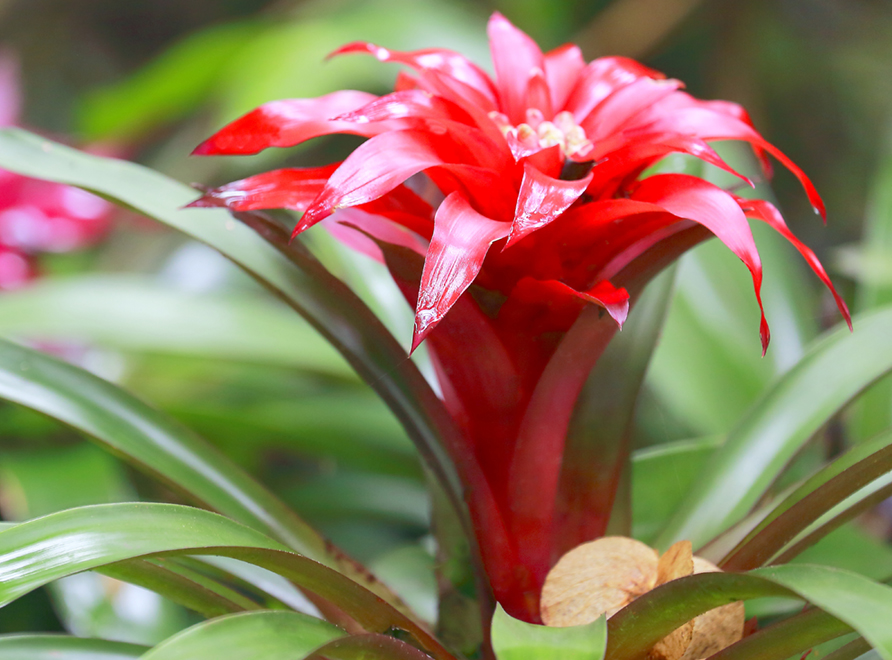
Guzmania
Guzmania
Bring colour to your container garden with a Vase Plant!
Native to the Neotropics, from Florida to South America, there are more than 200 Guzmania species and many hybrids. They are colourful, striking Bromeliads with brightly coloured flower spikes, and they often have interesting markings on their leaves.
Guzmania are the ideal indoor plant
A great Bromeliad for the indoor container gardener, the Vase Plant needs a very well-drained potting mix, warm and humid conditions and bright but indirect light to flower. They tolerate artificial lighting, and their dramatic form and flower spikes make them exciting specimens. They are often grown as a ground cover in the shade of trees in tropical and subtropical climates

Guzmania's habitat
Vase Plants
Tufted Air Plants
Torch Bromeliads
The genus Guzmania is named for Spanish pharmacist Anastasio Guzman who died while collecting South American plants (and hunting for the mythical lost treasure of the Incas) in Ecuador in 1807.
Guzmania species’ native range is from Florida to Tropical America, with their highest concentration in Central America.
In the wild, Guzmania grows on trees and rocks in non-tidal wetlands and forests in coastal areas with warm, humid climates and at altitudes of up to 3,500 metres in the Andean rainforests.
The Guzmania’s long, slender, leathery leaves form a funnel-shaped rosette topped by a single brilliant torch-like flower spike with showy bracts (leaflike appendages that form under the flowers).
Growing up to 50 cm, Guzmania leaves are often green-and-white striped; the bracts on the flower spike are often vibrantly coloured and can be bright red, yellow, orange, purple, or pink.
In addition to pups, Guzmania produces long, cylindrical seed capsules that grow up to 4 cm.
More than 25 Guzmania hybrids grow in the gardens at the Royal Botanic Garden Sydney.
Use the Garden Explorer to find them – type 'Guzmania' into the 'Common or Scientific Name' field, then click 'search' to be shown where to find them.
Garden sign story: Vase plants – Guzmania species
Bromeliad water tanks mean life for rainforest creatures. Monkeys, lizards and birds drop in for drinks and snacks. Frogs, insects and microscopic creatures can live their entire lives inside the tiny ecosystems. The flowers are an important food source for thousands of different pollinators including birds, bats and insects.
Image: A hopeful Mail Monkey (Macaco prego) looks for food in a bromeliad, in Itatiaia National Park, Brazil. © R. Coelho Shutterstock
Plant pups
Like all Bromeliads, Guzmanias are monocarpic — they flower just once in their life. After blooming, they continue growing from offsets or ‘pups’ produced at the base of the plant as it matures. These are clones, and each one will grow into an identical new plant.
Image: Dividing Guzmania pups.
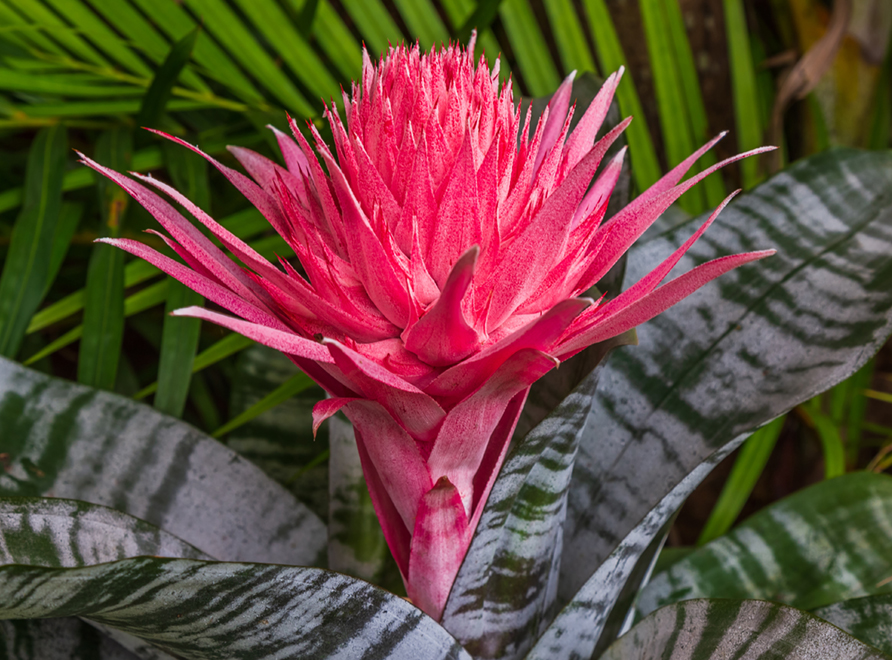
Aechmea
Aechmea
The Silver Vase Plant – the elegant Bromeliad
Also known as the Urn Plant and comprising more than 250 species with over 500 cultivars, Aechmea are native to the Neotropics (Central and South America).
These Bromeliad species are mostly epiphytic and have diverse foliage, flower colour and growth habits. Their eye-catching, long-lasting, spear-like flowers and elegant vase-like form differentiate them from other Bromeliads.
The ideal bromeliad for hanging baskets
The Aechmea species is an excellent clumping landscape plant for gardens in tropical and subtropical areas as long as they are planted in well-drained, shady, but well-lit positions.
They grow happily in outdoor container gardens and hanging baskets in lightly shaded spots and are long-day bloomers, needing more than 12 hours of sunlight.
Their intensely coloured flowers and bracts make them a popular indoor plant, but they can become top-heavy in pots.

Aechmea's habitat
The species' name 'Aechmea' comes from the Greek word 'aichme' which means spear point, and refers to the Silver Vase Plant's dramatic, spear-like flowers
Aechmeas' native habitats vary widely from Mexico through Central and South America (mainly in Brazil) and the Caribbean.
Their growing conditions range from humid tropical montane forests to the cooler subtropical areas of southern Brazil and Argentina, the upper forest canopy of the Amazonian rainforest to the restinga (dry coastal forests of Brazil). Other Aechmeas are found in sand in full sun (A. discordiae) and on rocky outcrops (A. entringeri).
Aechmeas are a large and diverse group of tropical Bromeliads with plants ranging from 10 cm to 1.5 metres tall. They form clumps either on trees as epiphytes or as specimens in the ground and are distinguished by their enduring inflorescences that last up to 6 months.
They have stiff, spiny leaves that offer the plant protection from grazing animals. The sometimes patterned leaves form wide, spreading, urn-shaped rosettes, and most Aechmeas prefer shade.
Attract frogs with Aechmeas!
Aechmeas roots are used as anchors and the plants gain their water and nutrients from the 'tank' formed in the central funnel of their tight rosettes of leaves. The 'tank' makes them a potential mosquito hazard in home gardens, but they are a great habitat plant for insects and frogs.
Pollinated by hummingbirds in the wild, Aechmea usually needs the pollen of another plant to be fertilised. They produce small seed-bearing fleshy berries which take about eight months to ripen.
Propagation can be by seed or pups (offsets) appearing at the plant's base after flowering. Commercial producers use tissue culture to propagate Aechmeas.
Type 'Aechmea' into the 'Common or Scientific Name' field in the Garden Explorer, then click 'search' to be shown where to find them.
Garden sign story: Spear plants – Aechmea species
It's the perfect froggy home, and the rent is cheap – poo provides the plant with the nutrients it needs to grow
Happy house-mates
High above the rainforests of South America, Poison Dart Frogs make their homes in the water tanks of Spear Plants — Aechmea bromeliads. Stiff, spiky leaves fend off predators, making a safe refuge for the tiny residents. Hundreds of frog species are bromeligenous – from egg to tadpole to frog, their entire life cycle takes place in the micro-ecology of the bromeliad host's water tank. Without bromeliads, these little frogs would disappear forever.
Image (left): Maroon Eyed Tree Frog sitting on a bromeliad. ©J. McGraw Shutterstock. Image (right): Aechmea nudicaulis var. aureorosea provide habitat for Poison Dart Frogs in south-eastern Brazil. ©L.C. Marigo Alamy
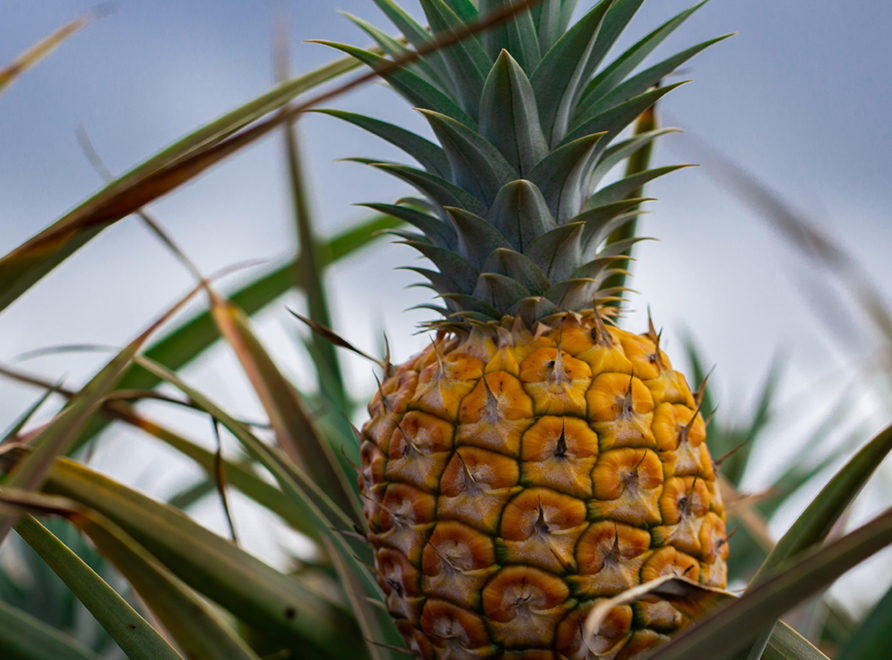
Pineapples – Ananas comosus
Pineapples
Ananas comosus – the sweetest of all Bromeliads
Ananas comosus is a seedless Bromeliad cultivar grown for thousands of years by the Mayans and Aztecs for its sweet fruit. In addition to food, First Nations peoples have used the plant to make alcohol, herbal medicines and as a fibre for weaving.
Native to South America and widely distributed in pre-Columbian times, Columbus introduced the Pineapple to Europeans following his landing at Guadeloupe in 1493. They were so expensive to grow and import to Europe until the 19th Century that they became a symbol of wealth deployed as a motif in architecture and interior design.
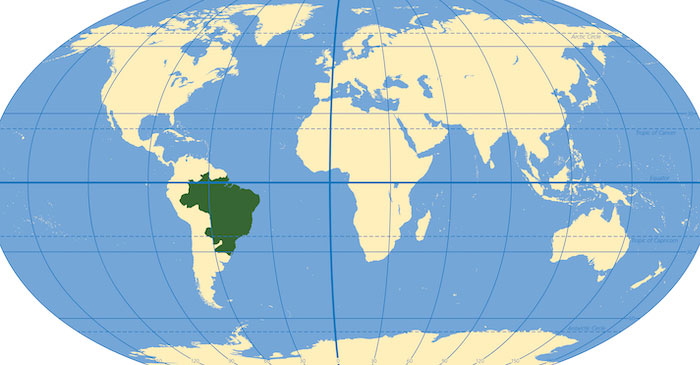
Ananas comosus' habitat
Pineapples have shallow roots and can be grown in containers in a well-drained potting mix, but bear in mind that they are very prickly plants and may be dangerous if you have curious children or pets in your household.
Pineapples have a life cycle of about two and a half years. The fruit is seedless and juicy, ripening five to six months after flowering begins.
‘Ananas’ is variously described as meaning ‘excellent fruit’ and ‘perfume’ in the South American Tupian language, ‘Ananas’ is the name for the fruit in the South American Tupian language meaning perfume.
A text from 1568 also records the Pineapple as being called ‘Hoyriri’ by the Tupi people who lived near modern Rio de Janeiro.
The fruit was dubbed ‘pineapple’ by Europeans due to its resemblance to pinecones. The species name ‘comosus’ is Latin for ‘shaggy’, which references the fruit’s leaves.
Ananas comosus is a terrestrial bromeliad which originally grew in a wide variety of habitats: forest and woodland, savanna, shrubland, native grassland and freshwater wetlands.
The modern Pineapple is a selectively bred descendant of wild plants thought to be from south-eastern and southern Brazil and Paraguay. It is an important commercial crop grown in the tropics and subtropics worldwide.
Ananas comosus grows from 50 cm to 1.5 metres tall, with a rosette of 30 to 40 stiff, waxy, strappy grey-green to reddish leaves up to 1 metre long and 4 cm wide.
The leaves are sometimes sharply serrated and grow spirally on a short stem, with a single, central flower spike. Our modern pineapples are seedless, but bees, sunbirds and hummingbirds are thought to have been their original pollinators.
Ananas comosus’ tough, waxy rind forms in hexagonal units which are dark-green, yellow, orange or red when the fruit ripens. The rind’s spiralling hexagonal pattern displays the Fibonacci sequence. The pineapple's sweet flesh ranges from nearly white to yellow, and commercial fruit can weigh up to 2.5 kg.
Type 'Ananas comosus' into the 'Common or Scientific Name' field in the Garden Explorer, then click 'search' to be shown where to find them.
Garden sign story: Hoyriri (Tupinamba language) Pineapple Ananas comosus
The perfect ‘status fruit’ — expensive, exotic and hard to come by!
Fruity superstar
Pineapples became an icon of luxury, power and wealth in 18th-century Europe. Vast sums were spent trying to grow pineapple plants in unsuitable climates. The fourth Earl of Dunmore built a walled garden to shelter his precious pineapple plants. Crowned by a themed summerhouse, it’s known as ‘the most bizarre building in Scotland’!
Image: The Dunmore Pineapple. ©U. Media Shutterstock
Buy a Bromeliad the next time you visit!
Visit the Royal Botanic Garden Sydney’s Growing Friends Nursery and check out the range of Bromeliads on sale at the moment – the selection varies, so don't be a stranger!
Every time you take a plant home from the Botanic Gardens' Growing Friends you're supporting the Australian Institute of Botanical Science's conservation research.